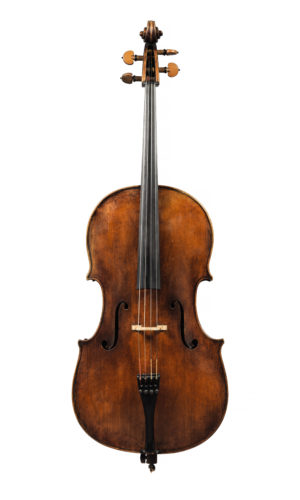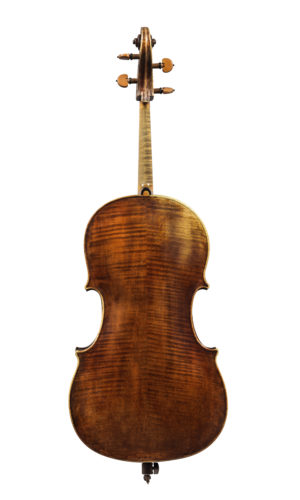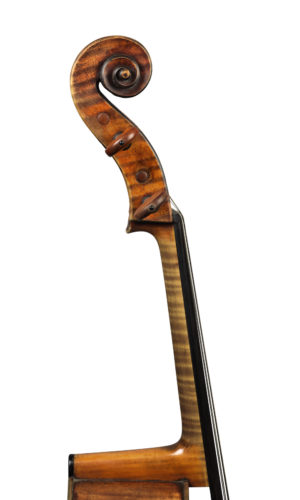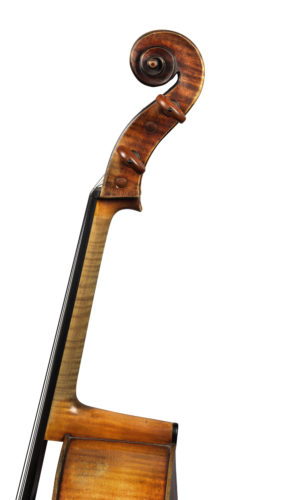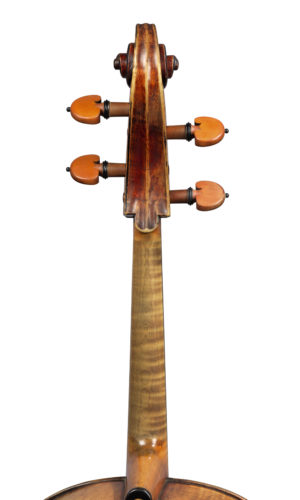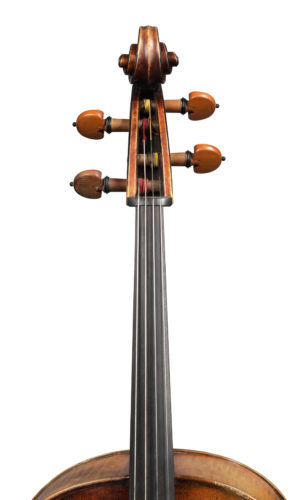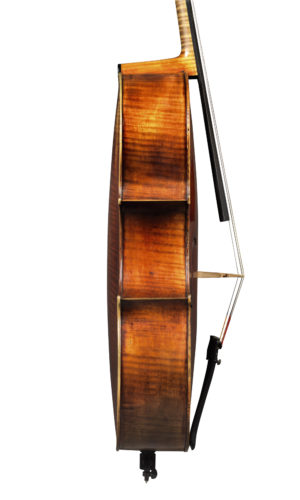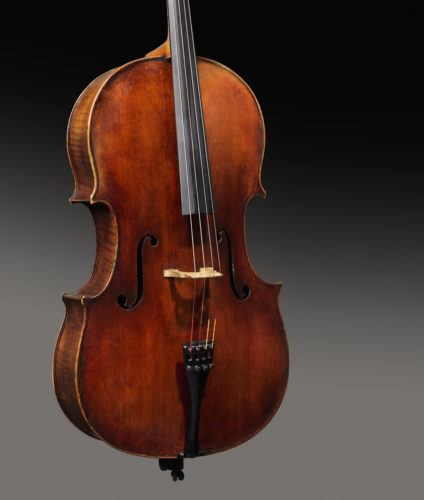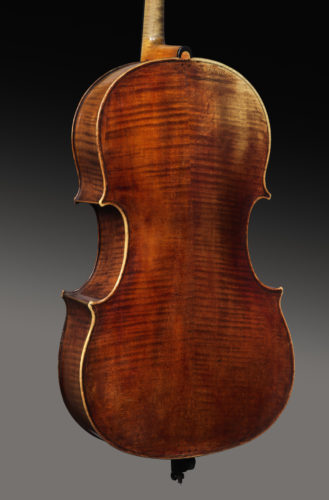Giovanni Battista Guadagnini
Cello made by Giovanni Battista Guadagnini in 1783 in Turin.Torleif Thedéen plays this instrument.
G.B. Guadagnini is regarded as the finest of the late classical Italian school of violin makers. His career began in Piacenza in about 1740, a crucial period in nearby Cremona, where Stradivari had died three years previously. By 1747 both of the other great Cremonese makers, Guarneri del Gesù and Carlo Bergonzi, were also dead. Quite suddenly Cremona had lost its pre-eminence in the craft, and the future development of lutherie seemed quite fragile. It was Guadagnini who took on their mantle.
Despite the proximity of the two cities, there is no evidence that Guadagnini received any direct training from Cremonese (or any other) violin makers, which makes his work all the more remarkable. What is known is that from a very early stage he was working closely with musicians, most importantly the Ferrari brothers, the violinist Paolo and cellist Carlo. Guadagnini’s life was to become a series of movements, from Piacenza to Milan, from Milan to Parma, and eventually from Parma to Turin, where he died in 1786, pursuing work and patronage. His friendship with the cellist Carlo Ferrari remained a constant factor until he left Parma in 1771, and in important ways was pivotal for his career.
Guadagnini’s very earliest work in Piacenza focussed on cellos, and throughout his life he developed new approaches, generally with the aim of making a more compact soloists’ instrument, livelier and more nimble than the great basses of the past, which had back lengths in excess of 77cm. The difficulty facing all cello makers is in keeping the depth and richness of the lower register in an instrument of smaller physical size and reduced air volume. Guadagnini’s work in general is marked by an original approach to all things, not just in the detailed finish of scrolls, purfling and soundholes, but in developing performance qualities, and in this, his close association with musicians is evident. Guadagnini’s great cellos can be as small as 60cm in back length, but the reduction is compensated for by generally inflating the shape of the arch, giving a larger vibrating wood surface and maximising internal volume.
The cello was sold by Hills in 1913 to a Miss Sybil Mounsey-Heysham of Castletown, Cumbria. Mounsey-Heysham was an amateur violinist and instrument collector and was a friend of Ralph Vaughan Williams. She owned a 1564 ‘Charles IX’ Andrea Amati violin, which she donated to Tullie House in Carlisle in 1949.
The cello was still in the possession of the Mounsey-Heysham family in the early 1960s, when it was sold to Derek Simpson, the cellist of the Aeolian Quartet. He parted with the instrument in 1964 and it was sold by Max Möller to a German amateur musician and collector, who eventually assembled a quartet of Guadagnini instruments including the ‘Hartmann’ violin of 1752 and the ‘Spohr’ of 1780.
The cello remained in the same family until the year 2000, when it was sold to Rostropovich. Mstislav had it brought to his flat in Paris, where he merely plucked it briefly before declaring his intention to buy it. The deal was consummated the same day over a long lunch, during which Rostropovich explained why he had always wanted to own a Guadagnini cello. At the age of 18 he had won the gold medal at the Soviet Union’s first ever competition for young musicians, and he attributed his success to the Guadagnini cello which he had used on that occasion. After he left Russia in 1974 he took the Guadagnini to a violin maker in Switzerland who declared that it was mis-labelled and nothing to do with that maker, so Rostropovich promised himself at that point that one day he would own a fine Guadagnini cello.
(Photos: Courtesy of Sotheby’s)
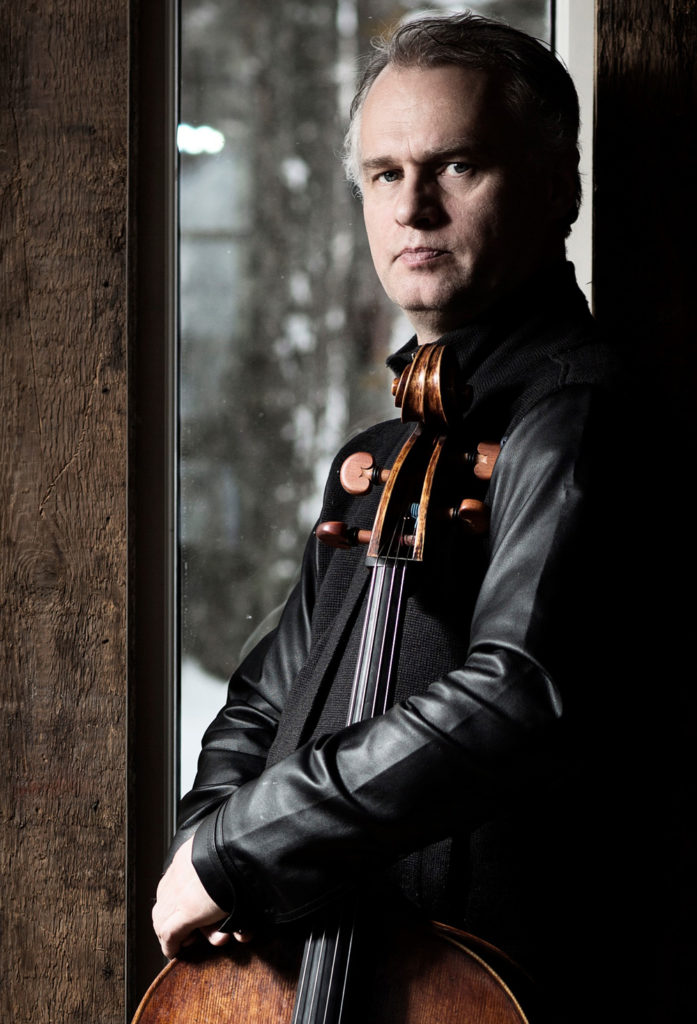
Torleif Thedéen
Torleif Thedéen plays a cello made by Giovanni Battista Guadagnini in 1783 i Turin.
